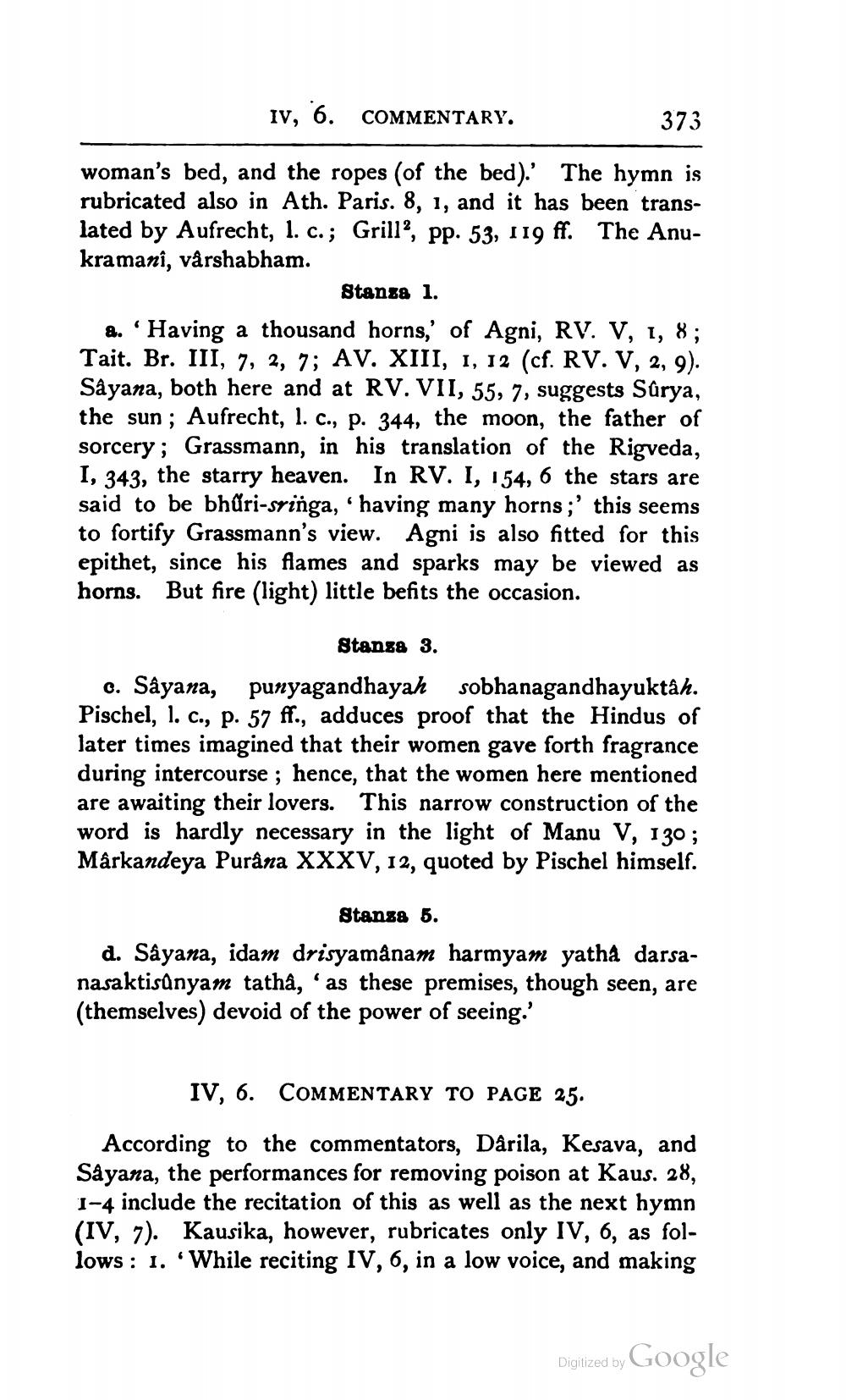________________
IV, 6.
373
woman's bed, and the ropes (of the bed).' The hymn is rubricated also in Ath. Paris. 8, 1, and it has been translated by Aufrecht, 1. c.; Grill2, pp. 53, 119 ff. The Anukramani, vårshabham.
COMMENTARY.
Stanza 1.
a. Having a thousand horns,' of Agni, RV. V, 1, Tait. Br. III, 7, 2, 7; AV. XIII, 1, 12 (cf. RV. V, 2, 9). Sâyana, both here and at RV. VII, 55, 7, suggests Surya, the sun; Aufrecht, 1. c., p. 344, the moon, the father of sorcery; Grassmann, in his translation of the Rigveda, I, 343, the starry heaven. In RV. I, 154, 6 the stars are said to be bhuűri-sringa, 'having many horns;' this seems to fortify Grassmann's view. Agni is also fitted for this epithet, since his flames and sparks may be viewed as horns. But fire (light) little befits the occasion.
Stanza 3.
c. Sâyana,
punyagandhayah
sobhanagandhayuktâh. Pischel, l. c., p. 57 ff., adduces proof that the Hindus of later times imagined that their women gave forth fragrance during intercourse; hence, that the women here mentioned are awaiting their lovers. This narrow construction of the word is hardly necessary in the light of Manu V, 130; Mârkandeya Purâna XXXV, 12, quoted by Pischel himself.
Stanza 5.
"
d. Sâyana, idam drisyamânam harmyam yatha darsanasaktisûnyam tathâ, as these premises, though seen, are (themselves) devoid of the power of seeing.'
IV, 6. COMMENTARY TO PAGE 25.
According to the commentators, Dârila, Kesava, and Sâyana, the performances for removing poison at Kaus. 28, 1-4 include the recitation of this as well as the next hymn (IV, 7). Kausika, however, rubricates only IV, 6, as follows: 1. 'While reciting IV, 6, in a low voice, and making
Digitized by
Google




